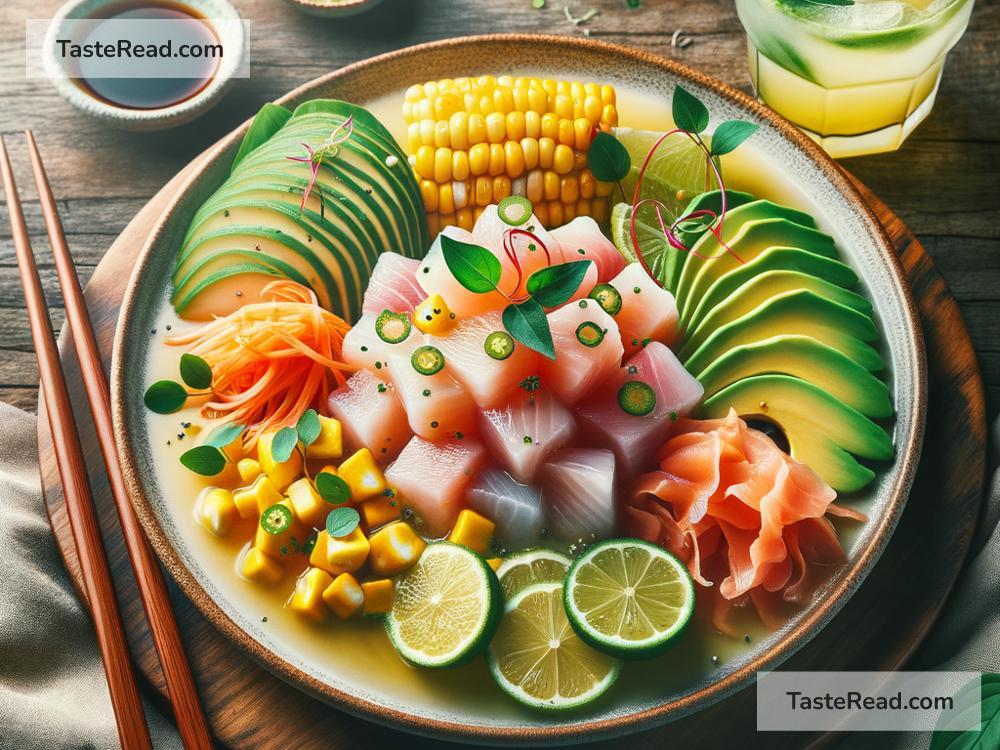Exploring the Fusion of Peruvian and Japanese Ceviche Creations
Food has a magical ability to unite cultures, merge flavors, and create something beautifully unique. One of the most exciting culinary fusions in recent years is the blend of Peruvian and Japanese cuisines, especially when it comes to ceviche. This mouthwatering dish, typically made with fresh fish marinated in citrus juices, has evolved into something truly special through the combination of traditional Peruvian techniques with Japanese influences. Let’s dive into the world of Peruvian-Japanese ceviche and explore why this fusion is captivating food lovers across the globe.
What Is Ceviche?
First, let’s start with the basics: What is ceviche? Originally from Peru, ceviche (or cebiche) is a dish made of raw fish or seafood “cooked” by marinating it in citrus juice, often lime or lemon. The acidity from the citrus changes the texture of the fish, giving it a firm yet tender bite. Usually, it’s mixed with ingredients like onions, chili peppers, and cilantro, creating a dish that’s fresh, tangy, and packed with flavor. Ceviche is more than just food—it’s a cultural icon in Peru and an emblem of fresh, honest cooking.
Enter Japanese Cuisine: The Art of Sushi and Raw Seafood
Japanese cuisine also celebrates raw seafood, particularly in dishes like sushi and sashimi. While the techniques differ from Peruvian ceviche, Japanese chefs have long mastered the art of highlighting the natural beauty and flavors of fish. Their approach often focuses on precision, balance, and simplicity, allowing the ingredients to shine without overpowering them.
The fusion of Peruvian ceviche and Japanese culinary techniques is not entirely surprising. The connection between Peru and Japan dates back more than a century, with Japanese immigrants introducing their traditions and flavors to Peru’s culinary scene. As a result, Nikkei cuisine—a style that merges Japanese and Peruvian food—was born. Ceviche became one of the most exciting playgrounds for this cultural melding.
How Did Peruvian-Japanese Ceviche Start?
Peru has a vibrant Japanese immigrant community, which significantly influenced its cooking. Nikkei cuisine grew out of this blending of culinary worlds, creating dishes that are both dynamic and unique. Peruvian-Japanese ceviche is one of Nikkei cuisine’s shining stars.
Japanese influences brought subtler flavors and thoughtful techniques to traditional ceviche. Instead of using bold spices that are common in Peruvian ceviche, Japanese-inspired versions often focus on lighter flavors, using soy sauce, sesame oil, ginger, and seaweed to complement the freshness of the fish. The careful preparation of each ingredient and the minimalist approach to seasoning align perfectly with the Japanese philosophy of food.
On the other hand, Peruvian elements bring bright acidity, chili heat, and bold herbal touches. Combined, this fusion enhances the dish, making it both refreshing and deeply satisfying.
What Makes This Fusion So Special?
Why is this fusion so beloved? It’s all about the balance between contrasting yet complementary flavors. Peruvian-Japanese ceviche combines the best of both worlds: Japan’s reverence for the natural taste and texture of fish and Peru’s vibrant, zingy flavors that add excitement to every bite.
Here’s what makes it stand out:
-
Freshness Is Key
Both Peruvian and Japanese cuisines prioritize fresh ingredients, especially when it comes to seafood. In ceviche, the fish must be impeccably fresh since it is served raw. Japanese techniques such as precise knife cuts and careful handling elevate the dish, ensuring delicate slices of fish that melt in your mouth. -
Bold and Subtle in Harmony
Peruvian ceviche uses ingredients like lime juice, ají amarillo (a yellow chili pepper), and cilantro, creating bold, zesty flavors. Japanese additions like soy sauce, mirin, and yuzu (a citrus fruit) balance this, offering subtle, umami-rich notes that make the dish more complex. Both styles work in harmony to create a beautifully rounded flavor profile. -
Visually Stunning Presentation
Japanese cuisine is known for its stunning presentation, and this has transformed the way ceviche is served. Instead of being plated casually, Peruvian-Japanese ceviche often arrives looking like a work of art. The use of colorful edible flowers, thinly sliced vegetables, and carefully arranged fish makes it almost too pretty to eat.
Modern Variations of Peruvian-Japanese Ceviche
Chefs around the world have adopted Nikkei cuisine and are experimenting with their own versions of Peruvian-Japanese ceviche. Some use traditional Peruvian fish like sea bass and combine it with Japanese touches like pickled ginger or ponzu sauce. Others swap lime juice for yuzu, or add ingredients like avocado, shiso leaves, or sesame seeds for texture. Another popular variation includes tuna ceviche, inspired by Japanese sashimi.
Restaurants serving Nikkei ceviche are becoming increasingly popular, offering food lovers an exciting chance to experience this bold fusion. Whether you try it in Lima, Tokyo, or your local cosmopolitan eatery, every bite feels like a celebration of both cultures.
Conclusion
Peruvian-Japanese ceviche is proof that blending culinary traditions can lead to incredible innovations. This dish preserves the soul of Peruvian ceviche while incorporating the delicate artistry of Japanese cuisine. The result is a balanced, flavorful creation that highlights the best of both worlds. It’s refreshing, healthy, visually stunning, and endlessly exciting.
Next time you spot Peruvian-Japanese ceviche on a menu, don’t hesitate. It’s more than just a fusion dish—it’s a testament to how food connects cultures and brings people together. After all, in the global world of food, creativity has no limits.


